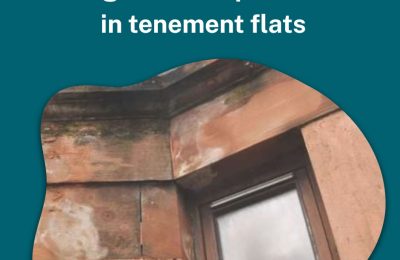Rising rents have dominated discussion in the Scottish housing market throughout 2022. It has been enough for the government to push through emergency legislation to freeze them and restrict landlords’ ability to take possession of their properties. On the other hand, very little is written about the impact increased costs that buy-to-let landlords are facing just to keep making their homes available for people to live in, is having on the number of homes available to rent.
Buy-to-let mortgage rates rose to over six per cent in October and although they have since slipped back a bit, it is estimated that as many as 70 per cent of BTL mortgages will need to be renewed over the next 18 months at much higher rates than they are now.
A recent online poll of property professionals put mortgage costs as having overtaken regulation of the sector, as the main driver of landlords deciding to sell their rental properties, pushing legislation and regulation, and taxation in second and third place respectively.
The current outlook of the private rented market
The latest market data collected by Propertymark shows renters are outnumbering available homes by nine to one.
The average number of new prospective tenants registering per member branch actually fell by 42 per cent from September to October, with an average of 85 in October, compared to 147 in September.
Does this mean there is light at the end of the tunnel? Demand is still above the pre-pandemic average for October of 72 (2018–2019) and any fall has been further negated by the number of available properties also being down by almost 20 per cent month-on-month.
Fewer rent rises reported by agents
There is some positive news for those rising rents, with a fall in the number of agents reporting month-on-month rent price rises, down to 68 per cent of member branches in October, compared to a high of 82 per cent in July.
Agents and landlords have spent much of this year at loggerheads with the Scottish Government’s over the finer detail of its longer-term reform of its private rented sector. They say it is too tenant-centred and does not offer enough protection for property owners to keep making their homes available for rent. All before the emergency Cost of Living (Tenant Protection) (Scotland) Act 2022 was introduced.
Holyrood has now reached out to agents for help to assess the impact of its emergency legislation which prevents routine rent increases until March 2023 and enforces a moratorium to block the enforcement of eviction notices but not the serving of notices, with some exemptions to both.
Tenants need more choice
It is important that ministers are aware of the environment agents and their private landlords are already operating in: higher costs to buy-to-let through the additional surcharges that have increased; higher interest rates; higher tax on rental income; they can no longer offset mortgage interest costs; changes to the wear and tear allowance; the removal of mandatory grounds for possession; the impending energy efficiency costs.
The proportion of the Scottish population who live in a private rented home has grown to around 15 per cent, so it’s important there is an adequate and affordable choice for tenants. Any additional pressures risk impacting the sentiment of existing and potential landlords to the point it may influence their decision to continue to make their homes available — or not.












